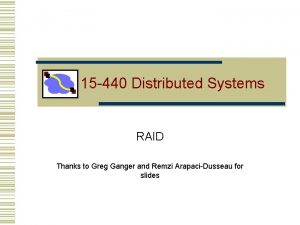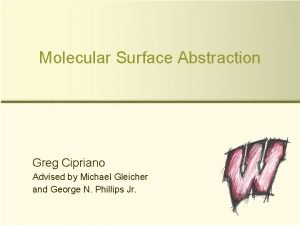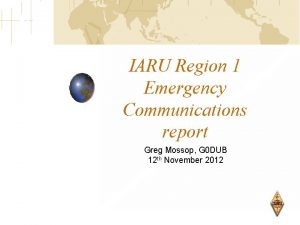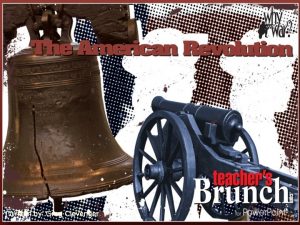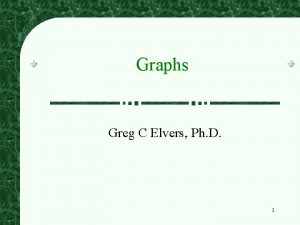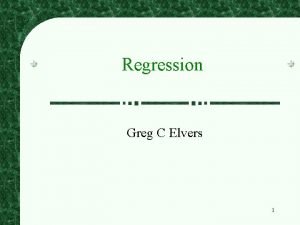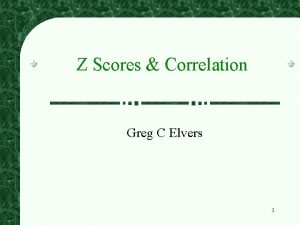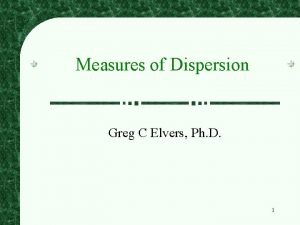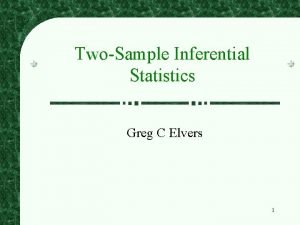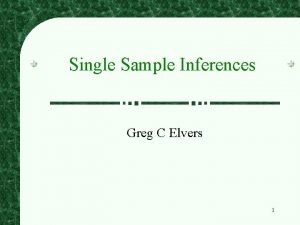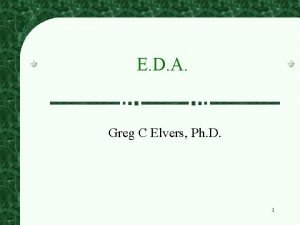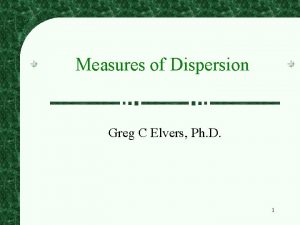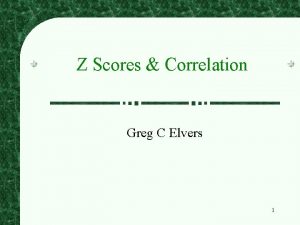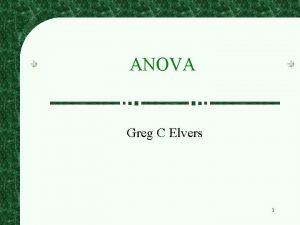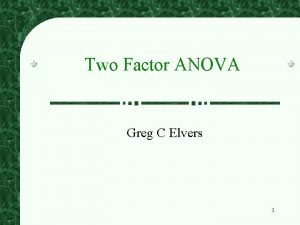Graphs Greg C Elvers Ph D 1 What













- Slides: 13

Graphs Greg C Elvers, Ph. D. 1

What Are Graphs? Graphs are a non-textual means of presenting information Graphs quickly summarize large sets of data easily show trends in the data easily show the relation between two or more variables The type of graph you use depends on what you want to show and the level of 2 measurement

Selecting a Graph Type For what do you want to use your graph? Summarize See Trends See Relations 3

Summarizing Data There are several graphs that are designed for summarizing data: Bar charts Histograms Tukey box plots 4

Bar Charts Bar charts show the number of items in each of several categories The X axis (or abscissa) contains the categories The Y axis (or ordinate) contains the frequency Most often used with nominally scaled data 5

Histograms are similar to bar charts, except they are used with at least ordinally scaled data The bars are adjacent to each other to emphasize the continuous nature of the scale 6

Tukey Box Plots Tukey box plots compactly display many descriptive statistics: * Mean Median Interquartile range Range Outliers 7

Seeing Trends in Data A trend is a relation between two or more levels of an independent variable E. g. , as time spent studying increases, exam scores tend to increase Many of the graphs used to display summary information can also be used to display trends in the data The line graph is especially useful 8

Line Graphs A line graph plots the independent variable on the abscissa and the dependent variable on the ordinate It assumes that the data are continuous in nature 9

Seeing Relations in Data Often you will want to see if two variables are related to each other E. g. , is amount of alcohol consumed per week related to college GPA? Scatter plots are often used to display this type of relation 10

Scatter Plots A scatter plot is a graph with one variable on the ordinate and the other variable on the abscissa Each observation is then plotted at its appropriate X and Y coordinates 11

Guidelines for Creating Good Graphs Think carefully about what you want to show, and use the graph that shows it the best Keep the graph uncluttered No graph title Keep legend out of the graph area Avoid chartjunk (3 D effects, shading, grid lines, hashing, etc. ) 12

Guidelines for Creating Good Graphs Make the axis labels sufficiently large; 24 points is a minimum Choose the scale of the axes carefully; do not make the range of the scale artificially high (can hide effects) or low (can exaggerate effects) There should be approximately 5 to 9 axis tick marks and labels per axis Do not break the Y axis 13






